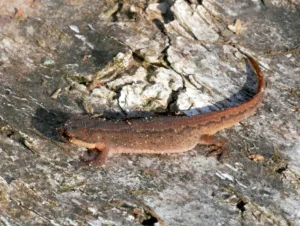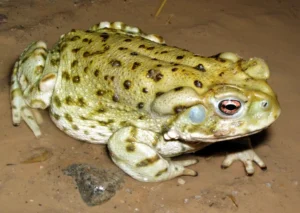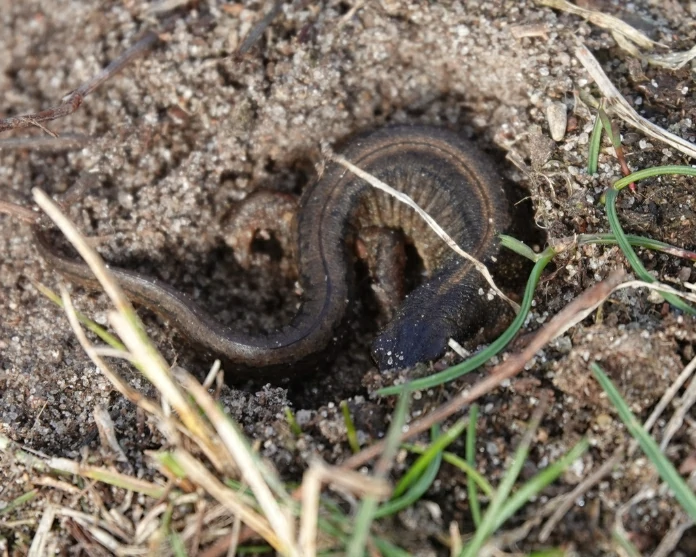When you think of desert wildlife, you probably picture animals built for hot, dry conditions, lizards, snakes, and desert mammals that know how to save water and survive heat.
Amphibians, with their soft, moist skin and need for water to breed, might seem like the last animals you’d expect in a desert. So are newts found in the desert?
No, newts generally aren’t found in true desert areas. Their skin loses water too quickly, and they need damp spots to survive. Still, some newts live in semi-dry regions with seasonal water, and a few can manage surprisingly dry places if water is around.
The answer isn’t just yes or no. Some newts survive in tough spots thanks to seasonal behaviors and special ways of finding moisture.
Why Are Deserts Hard for Newts?
Deserts are tough for amphibians. Dry air can quickly dehydrate animals with soft skin, and hot daytime temperatures can be deadly for cold-blooded creatures.

Newts breathe partly through their skin, so dry air can make it hard for them to get oxygen. Moving around in a desert without water can be very dangerous.
Studies show amphibians can lose life-threatening amounts of water fast in dry areas, which explains why few species live in deserts.
Do Any Newts Live in Semi-Dry Areas?
While true desert newts don’t exist, some species live in semi-dry regions. They take advantage of seasonal water and hide in protected spots during dry periods.
The California newt sometimes lives in drier foothills and mountains, but it still needs streams or cool, damp microhabitats during the dry months.
These newts have behaviors and body tricks that help them save water and survive, but they still need water sources that desert animals might not need.
How Do Amphibians Survive Dry Conditions?
Some amphibians in arid areas survive by avoiding the worst conditions. Many burrow underground where soil is moist, or slow down their metabolism until rain comes.

Certain desert frogs can absorb water through special skin patches and store it in their bladders. Newts haven’t developed these extreme water-saving adaptations.
Most amphibians in dry spots survive by hiding and waiting out the harsh conditions, rather than facing them head-on.
What About Temporary Desert Water?
Deserts sometimes have seasonal water (small pools after rain). These pools can let amphibians breed, but they vanish quickly.
Animals that use temporary pools must finish their whole water-based life cycle fast. Not all amphibians can do this.
Desert frogs and toads can handle it, but newts usually need more stable water and longer periods to breed and grow.
Could Newts Adapt to Desert Life?
In theory, newts could evolve to handle dry conditions over millions of years, but that would need major changes.
They’d need waterproof skin (which would mess with how they breathe), new behaviors to avoid dry spells, or breeding strategies that don’t need standing water.
So far, newts haven’t evolved desert specialists, which suggests their bodies just aren’t made for true desert life.
How Close to Deserts Do Newts Live?
Some newts live in areas with dry summers and wet winters. These places can be quite dry for part of the year, but they still have water when newts need it.
The difference is that these semi-dry areas give reliable water and moisture during breeding and development.
Newts here often spend more time underground or stay inactive during the driest months.
What Desert Animals Take Newt-Like Roles?
In deserts, other animals do the jobs newts do in wet places. Small lizards and snakes hunt insects and other invertebrates.
Some desert salamanders live in caves or springs, but these are like tiny oases, not true desert-adapted spots.
Desert spiders and centipedes can also fill similar predatory roles, showing how different animals can use similar opportunities.
Are There Any Surprising Desert Amphibians?
While newts haven’t made deserts their home, some amphibians have.
The Australian water-holding frog can survive underground for years during droughts.
Desert spadefoot toads in North America stay buried in dry soil for months and only emerge when rain creates temporary pools.
These examples show amphibians can adapt to deserts, but it takes extreme changes newts haven’t made.
Conclusion
No, newts aren’t found in true deserts, and it’s extremely unlikely they ever will without major changes that would make them different animals.
They rely on damp conditions and soft skin to breathe, which doesn’t fit with desert dryness and heat.
Newts need water and moisture, so deserts just aren’t the right place for them.
Hi, my name is Ezra Mushala, i have been interested animals all my life. I am the main author and editor here at snakeinformer.com.

